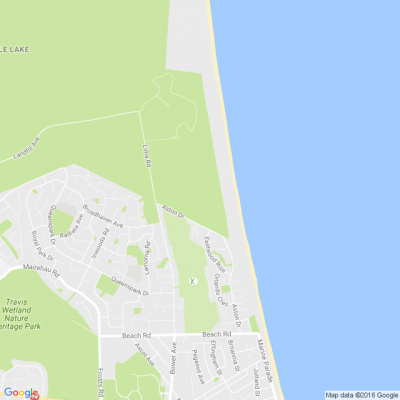
Know what’s happening
Access the private noticeboard for verified neighbours near you. Keep informed about any suspicious activity, send urgent updates to your neighbours when required and discuss emergency planning.
Get to know your neighbours
Browse the directory and start getting to know your neighbours. Don’t want to post to the whole neighbourhood? Send a private message.
Buy, sell and give away
Want to declutter your garage? Buy some used household items? Give away some garden stuff? Become a verified neighbour to browse and post items for sale. Trading is simple when everyone lives nearby.


Bring out the best in the concrete you already have #resenetip
Rejuvenate or refresh the colour of concrete inside or out with Resene ConcreteWash, a wash of sheer colour that can help to warm up the look of concrete without the need to replace it.

Thank you for using Neighbourly
You may receive an email confirmation for any offer you selected. The associated companies will contact you directly to activate your requests.
Jude from Shirley
2 Door magnitised Miniature Cabinet
Excellent Condition, fitted with Shelves.
Buyer must pick up from Shirley
Price: $30
Jude from Shirley
Lovingly Made with luscious assortment of healthy growing Plants including Ferns and
spider plants decorated with Shells and polished stones in large glass terrariums.
Free Delivery to Chch
suburbs only before 14th May. Call Jude on CELL 021 1846518
Price: $20
The Team from Neighbourly.co.nz
The month of May is New Zealand Music Month and it's got us thinking about all the musical talent from our shores throughout the years. We've come up with a few but if your pick isn't on the list, tell us who they are and why you think they are New Zealand's greatest … View moreThe month of May is New Zealand Music Month and it's got us thinking about all the musical talent from our shores throughout the years. We've come up with a few but if your pick isn't on the list, tell us who they are and why you think they are New Zealand's greatest band/artist.
Type 'Not For Print' if you wish your comments to be excluded from the We Say You Say column of your local paper.

251 replies (Members only)
We’ve always been there to tell your story, Mainland. Now we’re online too. Get fierce independent journalism with uncompromising South Island commentary, sports, business, environment, games and more. Subscribe to The Press online for less than a dollar a day. subscribe now. Find out more

Mike Gibbs from Avondale Neighbours Group
Week 16 - 2023
Activities on this week at WACST@Burwood 58 Bassett Street Burwood
Monday
Tai Chi - 10am to 11am - Only $3 per person
ZUMBA - 1pm to 2 pm - Only $3 per person.
Tuesday
… View moreWeek 16 - 2023
Activities on this week at WACST@Burwood 58 Bassett Street Burwood
Monday
Tai Chi - 10am to 11am - Only $3 per person
ZUMBA - 1pm to 2 pm - Only $3 per person.
Tuesday
Craft - 10am to Midday - Only $2 per person.
Line Dancing - 1pm to 2 pm - Only $3 per person.
Wednesday
Move it / Lose it - 10.30am to 11.30am - Only $3 per person.
Guest Lecturer. - 11.45am to 12.45pm
WiNZ Superannuation Entitlements
Graemme Anderson - CEO Superannuation
Only $3.00 per person
ZUMBA - 1pm to 2 pm - Only $3 per person.
Thursday
Indoor Bowls - 10am to Midday Walking Group - 10.30am to Midday
Euchre (Card Game) Board Games, Cards, Table Tennis Anyone - 1pm to 3pm Only $2 per person
Friday
Line Dancing Intermediate - 10am to 11am - Only $3 per person. Line Dancing Beginners - 11am to Midday - Only $3 per person. If you take both groups $5 per person.
Coronation Luncheon - Kings Quiche Luncheon 11.30am to 1.30pm
Love to have you join us,
Dress for a Royal occasion!!
Only $5 per person.
All Welcome
* More activities added or changed from time to time, so keep an eye on the schedule:
Enquiries to Betty Chapman 3892285
Cell 0277278277
Email wacst.burwood@gmail.com or wainoni.wacst@xtra.co.nz
New Members Welcome
Any Questions - Just ask
Treat that special person in your life this Mother’s Day with a TV Guide subscription. We’ve slashed the price of our 1-year subscription. You’ll save $57 off retail and receive a new issue every week delivered right to your home. Discounted price valid until 14 May.
The TV Guide is New … View moreTreat that special person in your life this Mother’s Day with a TV Guide subscription. We’ve slashed the price of our 1-year subscription. You’ll save $57 off retail and receive a new issue every week delivered right to your home. Discounted price valid until 14 May.
The TV Guide is New Zealand's most comprehensive and interactive entertainment magazine, providing TV listings, entertainment, gossip, competitions, puzzles and much much more! The perfect coffee table staple for all households.
Happy Mother’s Day,
TV Guide
Find out more

We are a non-denominational Christian school that caters for children from Year 1 – 13. Our point of difference - We are a Christ-Centred, student oriented school. Our ‘Why’ is to offer families a holistic education for their children, focusing on Character, Excellence and Service – for … View moreWe are a non-denominational Christian school that caters for children from Year 1 – 13. Our point of difference - We are a Christ-Centred, student oriented school. Our ‘Why’ is to offer families a holistic education for their children, focusing on Character, Excellence and Service – for the glory of God.
Middleton Grange School provides a first-rate general education with academic results of the highest quality, and we do this by providing an environment in which the Biblical truths of Jesus Christ are taught and lived.
We see learning as holistic; it aims to instruct the mind, shape the heart and prepare the hands for service.
We want our young people to critically engage in the rapidly changing society and culture that they live in, in order to be a positive influence and to point others to God by their example.
2024 Enrolments Close
Friday, 9 June (Y7-13)
Thursday, 17 August (Y1-6)
If your child turns 5 before 21 Nov 2024 and will start school in 2024 you must apply this year
Open Days
16 & 18 May 2023
We look forward to welcoming you to be part of the Middleton Grange School family – a school community of Special Character!
Please check our website for further information. Email to office@middleton.school.nz
Find out more

Graeme from Shirley
need ya lawns done you provide the mower and gas i will cut these for free yes thats Free need help to bring the wood in for the fire yes i can help please just ask willing to make this community out there a lot easier for people in need thanks for your time

The Team from Resene ColorShop Shirley
Make the most of your open shelves with a refresh using Resene paints.
Find out how to bring out the best in your shelves with this easy to follow advice.

The Team from
When you move into a Ryman village, the last thing you want to think about are your finances. From the day you move in, you’ll know how much you’re paying and what’s guaranteed to be paid back when you move out.
Ryman offers several Peace of Mind Guarantees, each one is designed to help … View moreWhen you move into a Ryman village, the last thing you want to think about are your finances. From the day you move in, you’ll know how much you’re paying and what’s guaranteed to be paid back when you move out.
Ryman offers several Peace of Mind Guarantees, each one is designed to help you feel confident and secure in your decision to move to a Ryman village. With financial certainty you can focus on enjoying the exciting everyday of life.
Learn More

The Team from Neighbourly.co.nz
On Tuesday, the 25th of April we commemorate all Australians and New Zealanders who have served and died for their country. But it's also an opportunity to connect and share stories about your ancestors. What does Anzac Day mean to you?
Type 'Not For Print' if you wish your … View moreOn Tuesday, the 25th of April we commemorate all Australians and New Zealanders who have served and died for their country. But it's also an opportunity to connect and share stories about your ancestors. What does Anzac Day mean to you?
Type 'Not For Print' if you wish your comments to be excluded from the We Say You Say column of your local paper.

138 replies (Members only)
Nicole Mathewson Reporter from The Press
From reporter Lee Kenny:
Canterbury’s mayors have called for an additional $1 billion to improve transport in the region, but no-one can say exactly what the extra cash would be spent on.
The funding is one of three “immediate priorities” in the Plan for Canterbury 2023-2025, which says… View moreFrom reporter Lee Kenny:
Canterbury’s mayors have called for an additional $1 billion to improve transport in the region, but no-one can say exactly what the extra cash would be spent on.
The funding is one of three “immediate priorities” in the Plan for Canterbury 2023-2025, which says ensuring the transport system is “fit for purpose requires significant investment”.
The document has been drawn-up by Canterbury Mayoral Forum, which is made up of the mayors of Canterbury’s 10 territorial authorities and Peter Scott, chairperson of Environment Canterbury (ECan).
It doesn’t state exactly how the extra billion would be spent, but one transport expert said although the extra detail “would be useful”, it was still a good message to send to Wellington.
A report published on Wednesday said the additional $1b for the region’s “vast transport network” is required over the next 10 years as “current funding sources do not meet present or future [...] resilience requirements”.
When asked what specific projects the $1b might fund, Hurunui District mayor Marie Black said: “At this point it’s probably not useful to think about specific details, but actually the direction that we are looking is to create a better link and help people mind-shift into that integration.”
Christchurch mayor Phil Mauger was not available for comment, while Ecan was also unable to respond to questions about what the cash would be used for.
The Mayoral Forum report said transport strongly influences economic development, “supporting supply chains that are critical for getting our exports to market and imports back to us”.
“Current funding sources from local authorities and the National Land Transport Fund will not meet current needs, particularly when faced with resilience issues.”
Although no specific concerns or solutions are stated, “there are options to be investigated”, the report said.
Christchurch transportation engineer Glen Koorey said it was good news that transport was being prioritised by the region’s mayors but greater detail “would be useful”.
Ministers often expect people to “present a case”, when they are asking for extra funding.
“Having said that, it’s probably a useful message to be able to say to Wellington, we feel we're a bit underserved.
“Canterbury has often felt underserved in terms of funding, Wellington often seems to do better for a region the same size, if not smaller,” he said.
“I can understand (the Canterbury Mayors) asking for a bigger piece of the pie.”
The Plan for Canterbury 2023-2025 also calls for improved flood prevention and better policies to attract skilled workers to region, as Canterbury’s gross domestic product (GDP) per person “lags (behind) the national average”.
Canterbury is New Zealand’s largest region by land area, with 78,000km of rivers and streams, which present “substantial risk of major flooding events”, the report said.
The mayors are calling on the Government for “permanent co-investment in flood protection”, to shift the focus from disaster relief and recovery to mitigation of flood risks, reducing the long-term costs.
The Rangitata River burst its banks in December 2019 causing widespread flooding, while extreme rain in May 2021 led to a regional state of emergency and hundreds of evacuations.
These recent events demonstrated how vulnerable parts of the region are to flooding, said Gary Kircher, mayor for Waitaki District, which also spans Otago.
“Flooding has impacted us probably more than other natural disasters,” he said.
“Just last July and August there were multiple flood events around Omarama and Otematata, and we have those challenges across the region.”
The mayors will travel to Wellington next month to outline their aims to ministers.
“Having one voice is going to be more effective and benefit all of us,” Kircher said.

18 replies (Members only)
Des from New Brighton
Does anyone know what is the earth works for at the New Brighton end of Pages Rd
Rememberance day!
ANZAC stands for Australian and New Zealand Army Corps. The soldiers in those forces became known as ANZACs. Anzac Day is a commemoration of the anniversary of the landing of Australian and New Zealand troops at Gallipoli, Turkey on 25 April in 1915.

The Team from Addictive Eaters Anonymous - Christchurch
Finding the answer
I have lived in New Zealand for the last twelve years, after being born and raised in Somerset, England. My parents ran a playgroup in our house for much of my childhood and I made close friends there, but I still felt isolated and different to everyone else.
I always loved … View moreFinding the answer
I have lived in New Zealand for the last twelve years, after being born and raised in Somerset, England. My parents ran a playgroup in our house for much of my childhood and I made close friends there, but I still felt isolated and different to everyone else.
I always loved food. We were able to help ourselves from the cupboards at home when I was young, with no restrictions. I believe a normal eater would just eat until they were full, but I could not stop. I put extra food in Mum's shopping basket and would gorge on leftovers at night with my friends. My friend’s dad owned a pub and when the half-eaten plates came back, I would pick chips off them, chatting as I did so, to my friends' astonished faces.

 Loading…
Loading…
Are you sure? Deleting this message permanently removes it from the Neighbourly website.
 Loading…
Loading…
© Neighbourly 2025
